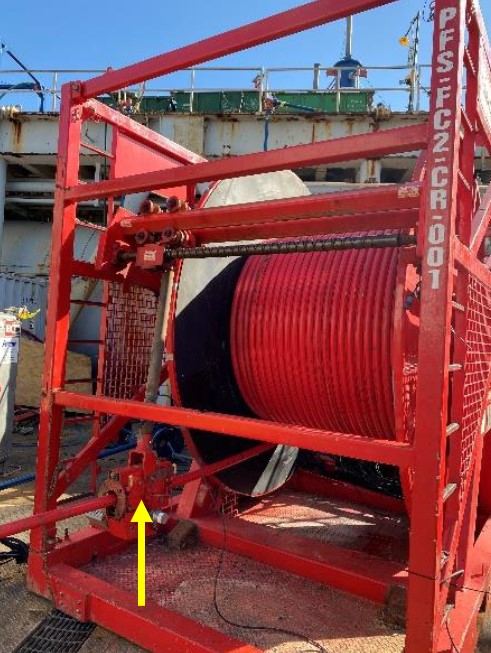BSEE: Unsecured Pressurized Hoses Result in Hand Injuries
What happened
The United States Bureau of Safety and Environmental Enforcement BSEE) has published Safety Alert No. 442 relating to hand injuries caused by handling unsecured pressurised hoses during coil tubing operations.
Incident 1: A flexi coil hose was filled with salt water during a pressure test and tested to 10,000 psi for 10 minutes. The pressure was bled to 6,000 psi through a needle valve at the pump’s discharge following the successful test. Once the pressure was bled to 6,000 psi, a worker began releasing pressure from a ball valve on the upstream end of the flexi coil hose. While doing so, the flexi coil hose backlashed and pulled the valve from the worker’s hand, causing the ball valve to contact the coil reel of the unit. The ball valve came apart when it hit the unit, and the handle contacted his right thumb, causing a laceration. The injured worker stated he was wearing latex gloves at the time of the incident. Right before opening the valve handle, he had been handling hydraulic oil.
Incident 2: Crew were in the process of rigging up three nitrogen bottle racks to blowdown and purge the reel during rigging down operations. After a successful connection to the reel, the three nitrogen bottle racks were opened to pressurize the line. A valve at the reel was opened to begin purging the reel. After opening the reel valve, the nitrogen hose connecting the second bottle rack failed at the brass fitting, sending the pressurized hose whipping around. The injured crew member was struck in the hand, resulting in two broken fingers and multiple lacerations. The hose then struck a second worker in the arm, causing bruising and swelling of the forearm. The injured person was not wearing impact gloves at the time of the incident.


What went wrong
In both cases, the injured parties were not wearing proper impact gloves to help reduce the severity of a hand injury. Moreover, in neither incident was the appropriate safety device/equipment installed to keep the pressurized hose secured correctly in the event of a mechanical failure.
In incident 2, the job safety analysis (JSA) did not address the procedure for blowing down the reel dry and other associated hazards.
BSEE recommendations included:
- Emphasize the use of properly fitting gloves (e.g., impact, chemical, or a dual glove) in the JSA to reduce or eliminate the severity of sustained hand injuries;
- Depressurise the line entirely or depressurize to a much lower pressure before manipulating valves under pressure;
- Ensure that during pressure testing, hoses are secured to prevent them from moving. Avoid stressing small threaded connections by properly supporting hoses and tubing;
- Use a whip check across a pressurized hose connection to mitigate uncontrolled movement in the event of connection failure;
- Verify that all valves are in the correct position before pressurizing equipment;
- Determine the correct PPE before handling chemicals. The materials used in some protective gloves may provide excellent protection against specific chemicals but may be ineffective against others;
- Ensure full and comprehensive review of every job task and associated hazards during the creation of the JSA;
- Use Stop Work Authority when equipment is unsafe or if you discover a new hazard!
Members may wish to refer to:
Safety Event
Published: 3 October 2022
Download: IMCA SF 22/22
IMCA Safety Flashes
Submit a Report
IMCA Safety Flashes summarise key safety matters and incidents, allowing lessons to be more easily learnt for the benefit of all. The effectiveness of the IMCA Safety Flash system depends on Members sharing information and so avoiding repeat incidents. Please consider adding [email protected] to your internal distribution list for safety alerts or manually submitting information on incidents you consider may be relevant. All information is anonymised or sanitised, as appropriate.
IMCA’s store terms and conditions (https://www.imca-int.com/legal-notices/terms/) apply to all downloads from IMCA’s website, including this document.
IMCA makes every effort to ensure the accuracy and reliability of the data contained in the documents it publishes, but IMCA shall not be liable for any guidance and/or recommendation and/or statement herein contained. The information contained in this document does not fulfil or replace any individual’s or Member's legal, regulatory or other duties or obligations in respect of their operations. Individuals and Members remain solely responsible for the safe, lawful and proper conduct of their operations.
